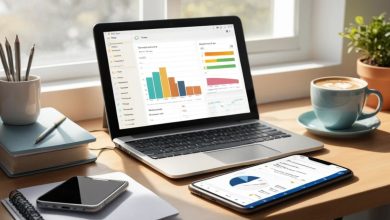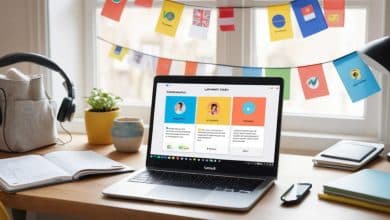How Online Learning Resources Improve Study Outcomes
The days of lugging heavy textbooks and flipping through dog-eared pages for answers are fading fast. Digital learning tools now place entire libraries, interactive simulations, and real-time analytics in a student’s pocket—often free of charge. This article unpacks how online learning resources boost grades, retention, and motivation, backed by research and real-world examples. You’ll also get a practical roadmap for weaving these tools into any study plan and clear metrics to track progress.
The Evolution of Online Learning Resources
Online study aids have come a long way since static CD-ROM encyclopedias:
| Milestone | Key Innovation | Impact on Learners |
|---|---|---|
| Late 1990s | CD-ROM reference discs | Self-paced but limited interactivity |
| Early 2000s | Video tutorials on nascent streaming sites | Visual explanations for complex topics |
| 2010s | Massive Open Online Courses (MOOCs) | University-level content for everyone |
| 2020-present | AI-powered adaptive platforms | Real-time feedback, personalized study paths |
The COVID-19 pandemic accelerated adoption, pushing schools and universities to embrace edtech solutions at scale—and students continue to reap the benefits.
Why Online Resources Enhance Study Outcomes
-
Personalized learning paths: Adaptive algorithms surface content at just-right difficulty, preventing both boredom and overload.
-
Multimedia engagement: Videos, simulations, and interactive quizzes stimulate multiple senses, improving recall.
-
Immediate feedback: Instant quiz results let learners correct misconceptions before they harden into habits.
-
Anytime, anywhere access: Busy schedules or geographic barriers no longer dictate when learning happens.
-
Collaborative tools: Peer discussion boards and shared documents foster accountability and deeper understanding.
Key Categories of Online Learning Resources
| Category | What It Offers | Best-Fit Use Cases |
|---|---|---|
| Video Platforms (Khan Academy, Crash Course) |
Bite-sized lectures, chapter quizzes | Visual learners tackling new concepts |
| Interactive Course Hubs (Coursera, edX) |
Structured modules, peer forums | College-level topics, certification prep |
| Digital Textbooks & OER (OpenStax, CK-12) |
Up-to-date, customizable content | Supplement or replace costly print books |
| Study Apps (Quizlet, Anki) |
Spaced-repetition flashcards | Memorizing formulas, vocabulary, dates |
| Virtual Labs & Simulations (PhET, Labster) |
Safe, hands-on experiments | STEM subjects needing practice without lab fees |
Comparative Analysis: Online vs. Traditional Study Aids
| Feature | Traditional Textbooks | Online Learning Resources |
|---|---|---|
| Cost | $50–$200 per book | Often free or freemium |
| Update cycle | New editions every 3–5 years | Real-time revisions |
| Engagement | Static text and images | Videos, gamification, simulations |
| Feedback speed | Weeks (graded papers) | Seconds (auto-graded quizzes) |
| Accessibility | Physical availability required | 24/7, multi-device access |
| Outcome data | Limited | Built-in analytics dashboards |
Bottom line: Online tools add agility and feedback loops that printed materials simply cannot match—leading to higher motivation and measurable performance gains.
Case Studies Demonstrating Improved Performance
University STEM Program
A mid-sized university integrated an adaptive homework platform into first-year calculus. Average exam scores jumped from 72 % to 81 % within one semester, while drop-fail-withdraw rates fell by 18 %.
High-School Language Class
By replacing paper vocab lists with the spaced-repetition app Anki, a high-school Spanish class boosted long-term vocabulary retention by 20 %, verified through surprise quizzes six weeks post-unit.
Self-Study Certification Seeker
An adult learner preparing for the Google Data Analytics certificate cut total study time by 30 % using short micro-learning videos on Coursera and automated practice tests, freeing evenings for project work without sacrificing exam performance.
Step-by-Step Tutorial: Building a Digital-First Study Plan
-
Set measurable goals
-
Example: “Score 85 % or higher on the next biology exam.”
-
-
Audit current resources
-
Identify topic gaps where grades or confidence lag.
-
-
Select the right tools
-
Conceptual learning: Khan Academy videos
-
Practice & recall: Quizlet sets
-
Experimentation: PhET interactive labs
-
-
Create a balanced schedule
-
Block 45-minute sessions that mix viewing, reading, and practice.
-
-
Track progress
-
Use platform dashboards or a simple Google Sheet for scores and time-on-task.
-
-
Iterate weekly
-
Increase difficulty or swap tools based on analytics and personal reflections.
-
Top Metrics to Monitor Study Outcomes
-
Quiz accuracy rate (target ≥ 80 %)
-
Time-on-task vs. mastery (less time, same or better scores)
-
Spaced-repetition intervals met (streaks maintained)
-
Practice-test score trend (steady upward trajectory)
-
Peer discussion participation (posts or replies per week)
-
Self-assessed confidence (quick 1–5 scale check-ins)
Monitoring these metrics keeps momentum high and highlights when a strategy needs tweaking.
FAQs
Are online resources as effective as textbooks?
Multiple studies show that students using interactive digital tools perform as well as—or better than—those relying solely on print, thanks to multimedia explanations and adaptive practice.
How do I stay focused and avoid distractions?
Use full-screen modes, browser extensions like StayFocusd, or dedicated study apps that block social media during sessions.
Can online tools replace in-person tutoring?
For many learners, yes—especially when platforms offer instant feedback and community forums. Complex or highly individualized challenges may still benefit from hybrid support.
Which free platforms work best for exam prep?
-
STEM: Khan Academy, CK-12
-
Languages: Duolingo, Memrise
-
Certifications: Coursera (audit mode), OpenCourseWare
How do analytics improve learning?
They highlight weak spots immediately, guiding students to revisit material before misconceptions solidify, and helping educators tailor interventions.
Conclusion
Online learning resources bring personalization, engagement, and real-time data to the study experience—advantages that translate into higher grades, deeper understanding, and greater learner autonomy. Start by integrating just one new digital tool into your routine this week, track its impact, and iterate. With strategic use, these resources can transform study sessions from passive page-turning into dynamic, results-driven learning—no oversized backpack required.
Published on: 4 de June de 2025








